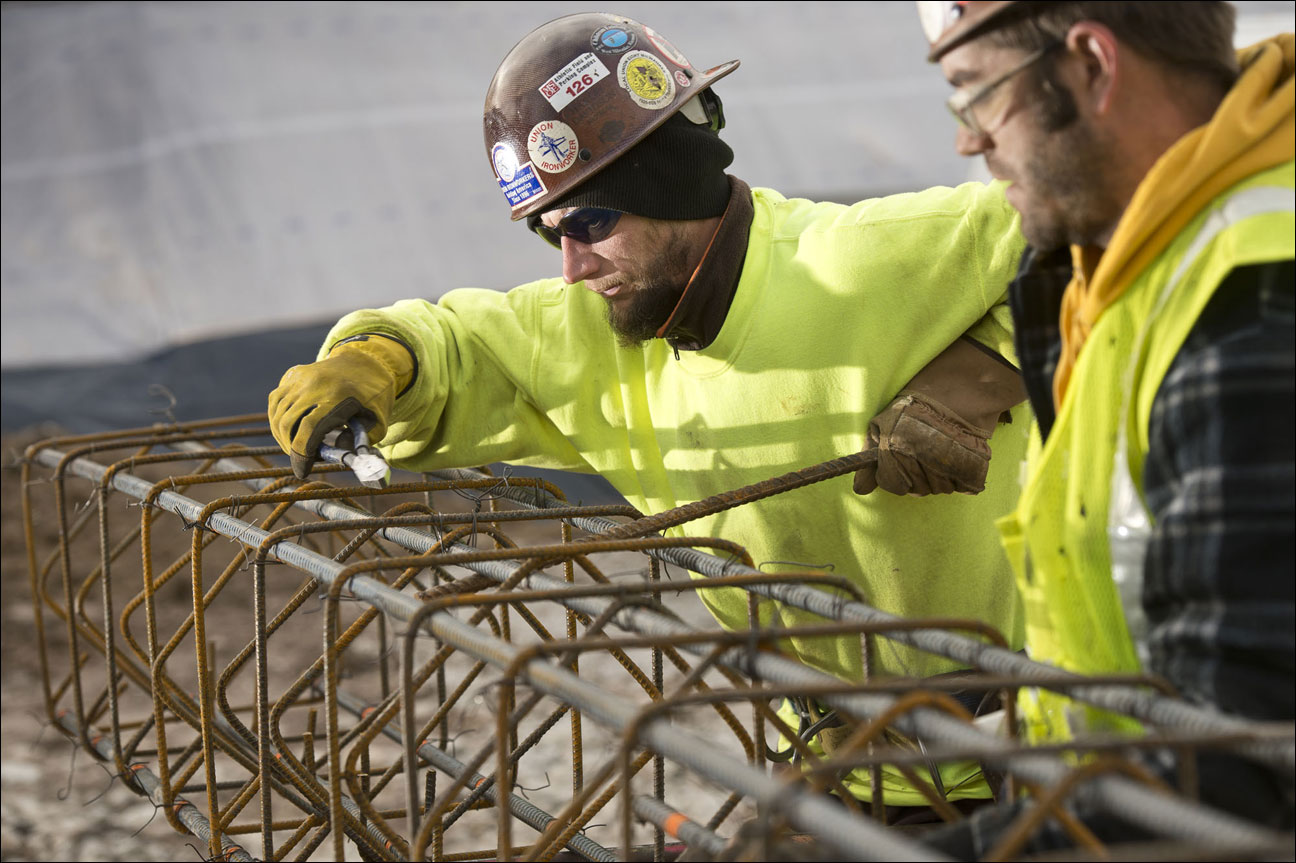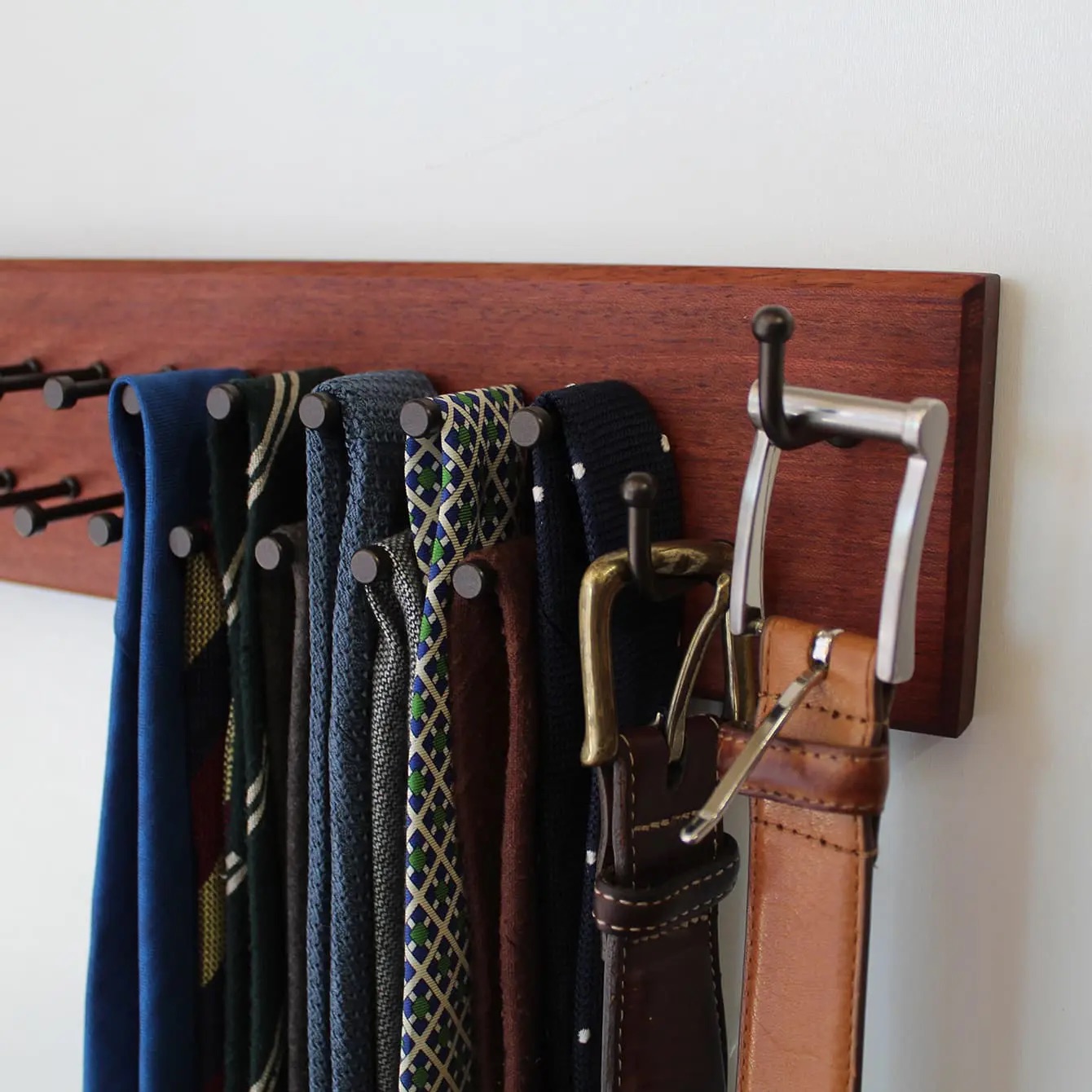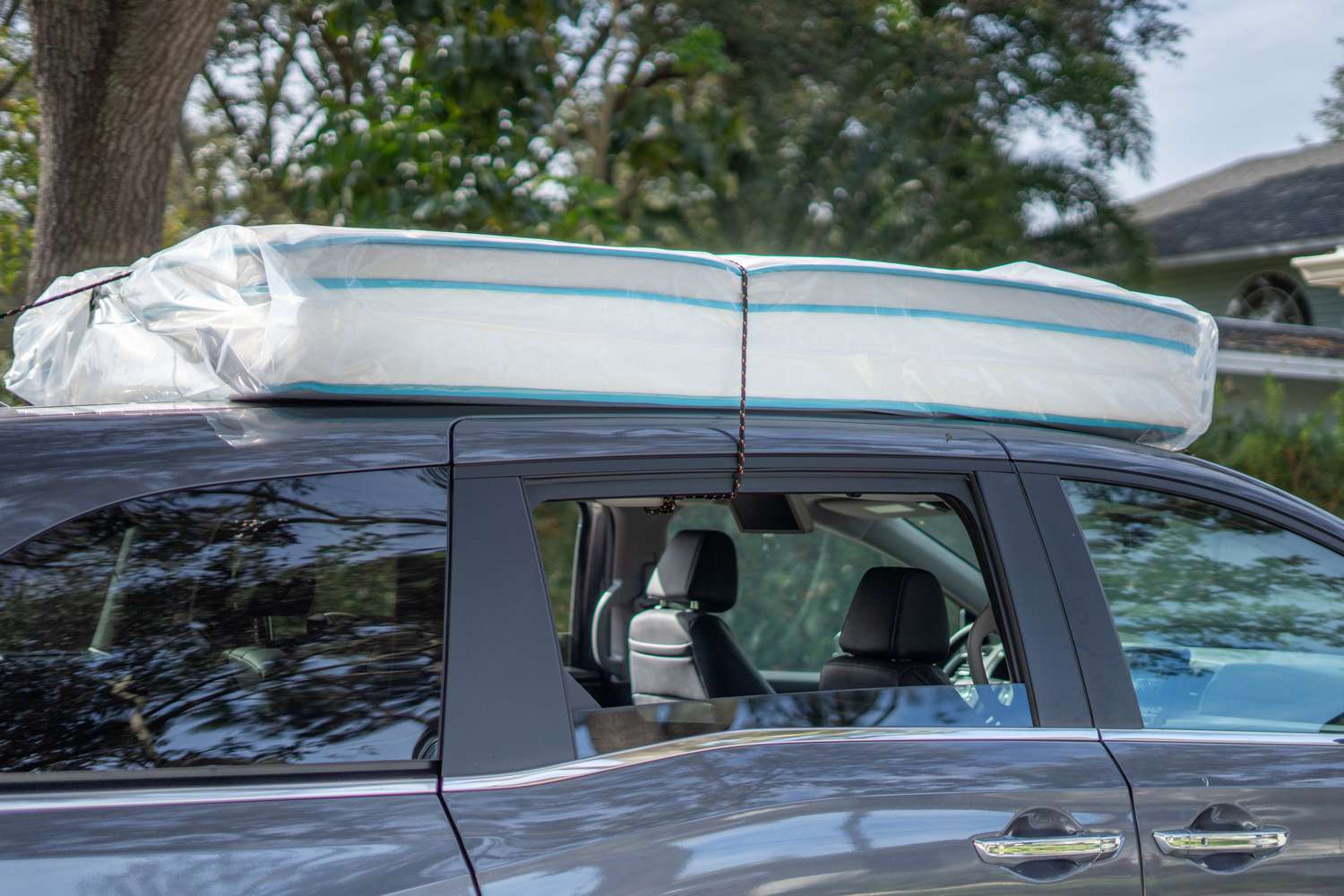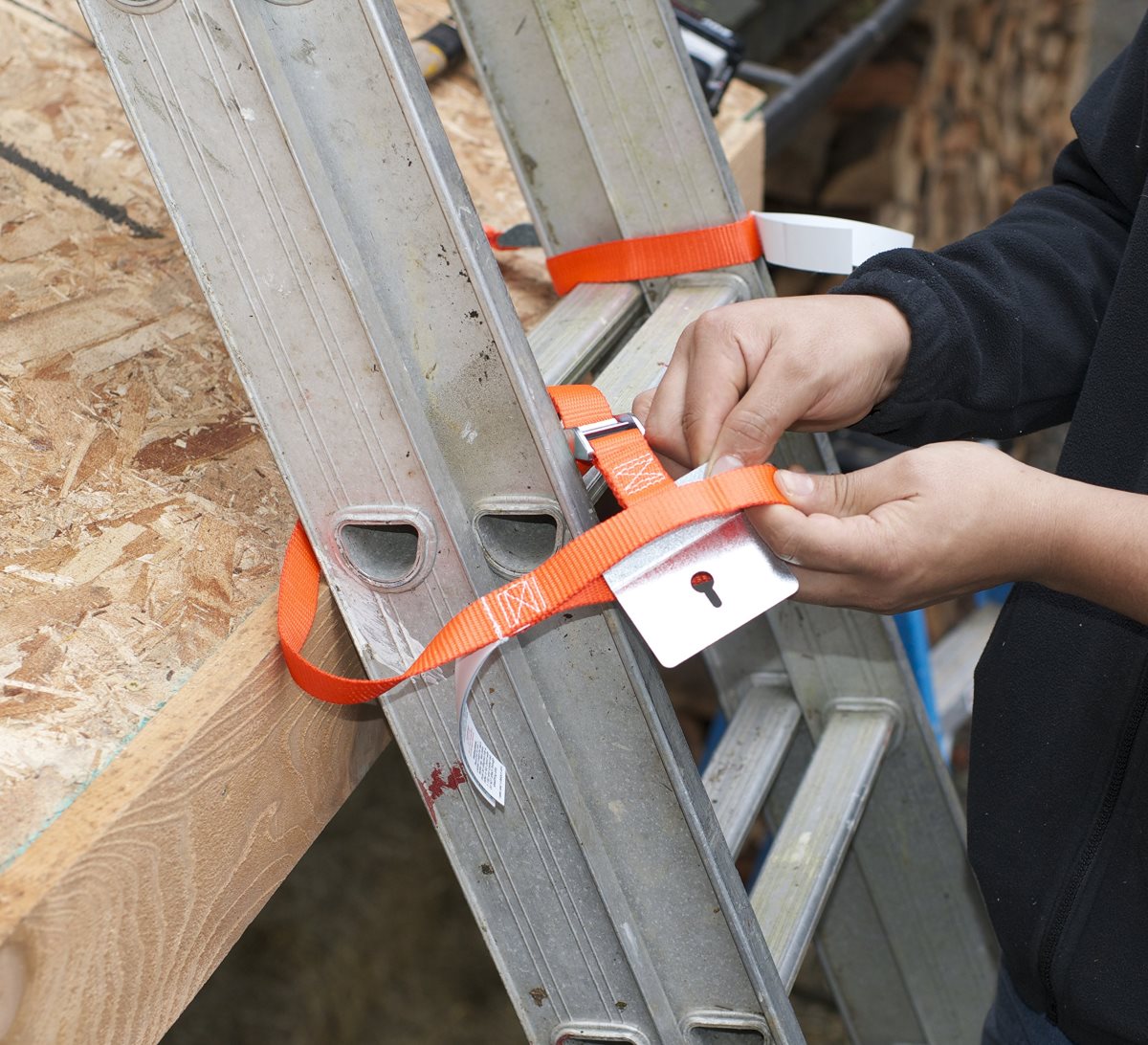Home>diy>Building & Construction>What Is A Tie In Construction


Building & Construction
What Is A Tie In Construction
Modified: May 6, 2024
Learn what a tie is in construction and its importance in building construction. Discover its role in providing structural stability and preventing structural failure.
(Many of the links in this article redirect to a specific reviewed product. Your purchase of these products through affiliate links helps to generate commission for Storables.com, at no extra cost. Learn more)
Introduction
Welcome to the world of construction! In the realm of building projects, from towering skyscrapers to humble residential homes, there are various intricate elements that come together to create sturdy and functional structures. One such important component is a tie.
In this article, we will delve into the world of ties in construction. We will explore their definition, types, importance, functions, materials, installation methods, regulations, and maintenance. By the end, you’ll have a comprehensive understanding of what ties are and their significance in the construction industry.
So, let’s dive in and discover the fascinating world of ties in construction!
Key Takeaways:
- Ties in construction are crucial for providing stability, resisting external forces, and preventing displacement. Proper installation, maintenance, and compliance with regulations ensure the safety and longevity of buildings.
- From wall ties to roof ties, understanding the functions and types of ties in construction is essential for creating durable and resilient structures. Compliance with industry standards and regular maintenance are key to ensuring the effectiveness of ties.
Read more: What Is A Brick Tie
Definition of a Tie in Construction
In the context of construction, a tie refers to a structural element that is used to connect or bind different parts of a building together. These ties play a crucial role in providing stability, strength, and resilience to a structure, ensuring that it can withstand various forces such as wind, earthquakes, and other external loads.
Ties are typically made from durable materials such as steel, concrete, or timber, and their design and placement depend on the specific requirements of a building project. They are strategically positioned to distribute forces evenly and prevent any weak points in the structure.
The primary purpose of a tie is to resist tensile forces or forces that pull or stretch a material. Since many construction materials, such as concrete and masonry, have excellent compressive strength but poor tensile strength, ties are used to counteract these limitations and enhance the structural integrity of the building.
It’s important to note that ties are not limited to a single construction element. They can be used to connect different components within a single structural element, such as connecting beams and columns or tying together different layers of masonry in a wall. Ties can also be employed to connect separate elements of a building, such as tying walls to foundations or connecting roof trusses to load-bearing walls.
Overall, ties serve as a critical link that ensures the overall stability and longevity of a structure. Without proper ties, a building may suffer from structural failures, compromising the safety of occupants and the overall functionality of the building.
Types of Ties Used in Construction
There are various types of ties used in construction, each designed to serve a specific purpose and cater to different structural requirements. Let’s explore some of the most commonly used types:
- Wall Ties: These ties are used to connect and stabilize masonry walls. They are typically embedded in the mortar joints between bricks or blocks and can be made from materials such as steel, stainless steel, or composite materials. Wall ties help distribute lateral loads and prevent the wall from leaning or collapsing.
- Roof Ties: Roof ties are used to secure the roof structure to the load-bearing walls of a building. They are essential for resisting uplift forces caused by wind, especially in areas prone to hurricanes or strong winds. Roof ties are often made of metal and are installed at strategic intervals to ensure the structural integrity of the roof.
- Column Ties: Column ties are used to reinforce vertical concrete or steel columns. They provide additional strength and stability, particularly in seismic zones or areas with high wind loads. Column ties can be in the form of stirrups, spiral ties, or hoops, and they are typically made of steel.
- Beam Ties: Beam ties are used to connect structural beams or joists to the supporting columns or walls. They help transfer the load from the beams to the supporting elements, ensuring proper load distribution and preventing excessive deflection. Beam ties can be made from steel or timber, depending on the structural design and requirements.
- Foundation Ties: Foundation ties are used to anchor the foundation walls to the underlying soil or bedrock. They prevent lateral movement of the foundation walls and provide stability, particularly in areas with expansive soils or high water tables. Foundation ties are typically made of steel or concrete and are installed at key points along the foundation.
These are just a few examples of the types of ties used in construction. It’s important to consult with structural engineers and follow established building codes and regulations to determine the appropriate type of tie for a specific construction project. The choice of tie will depend on factors such as the type of structure, design requirements, environmental conditions, and anticipated loads.
Importance of Ties in Construction
Ties play a crucial role in construction projects, and their importance cannot be overstated. Here are several key reasons why ties are essential:
- Structural Stability: Ties provide structural stability by connecting and integrating different components of a building. They help distribute loads evenly, preventing concentration of stress points that could lead to structural failure. By maintaining stability, ties enhance the overall strength and resilience of the building.
- Resistance to External Forces: Buildings are constantly subjected to various external forces such as wind, earthquakes, or ground movements. Ties help resist these forces by preventing excessive movement and maintaining the integrity of the structure. They ensure that the building can withstand these forces without compromising the safety of its occupants.
- Prevention of Displacement: Ties prevent the displacement of construction elements such as walls, beams, and columns. They anchor these elements and prevent any undesirable movement that could compromise the overall stability of the structure. This is particularly important in areas prone to high winds or seismic activity.
- Longevity: Properly designed and installed ties contribute to the longevity of a building. They protect the structure from deterioration by minimizing the effects of external forces and reducing the risk of damage. By ensuring the structural integrity of the building, ties help extend its lifespan.
- Occupant Safety: The safety of occupants is of paramount importance in any building. Ties contribute to the safety of a structure by preventing structural failures and ensuring that the building maintains its capacity to resist loads. This ensures a safe environment for everyone inside the building.
Without the use of ties, buildings would be vulnerable to instability, displacement, and potential collapse. Ties provide the necessary support and strength to create safe and durable structures that can withstand the demands of the environment.
It’s important to emphasize that the design, installation, and maintenance of ties should adhere to industry best practices and comply with relevant building codes and regulations. This ensures that the ties effectively perform their intended functions and contribute to the overall safety and longevity of the building.
Functions of Ties in Construction
Ties serve multiple important functions in construction projects. Let’s explore some of the key functions:
- Distribution of Loads: Ties help distribute loads evenly across different structural components of a building. They prevent excessive stress or strain in specific areas, ensuring a balanced distribution of forces. This helps maintain structural integrity and prevents the failure of individual components.
- Load Transfer: Ties play a crucial role in transferring loads from one structural element to another. They ensure that the load is effectively transferred from beams to columns, from walls to foundations, or from the roof to the supporting walls. This helps maintain stability and prevents excessive deflection or deformation.
- Resistance to Lateral Forces: Lateral forces, such as wind or earthquakes, can exert significant pressure on a building. Ties help resist these forces by connecting different elements of the structure, such as walls, roofs, and foundations. They provide the necessary strength and stability to counteract these lateral loads and prevent structural failure.
- Prevention of Structural Displacement: Ties prevent undesired movement or displacement of the building components. By anchoring walls, beams, and columns, ties prevent shifting or tilting, ensuring that the structure remains in its intended position. This is crucial for maintaining the stability and integrity of the building.
- Enhancement of Structural Rigidity: Ties contribute to the overall rigidity of a structure by connecting different elements and reducing flexibility. By minimizing the deformation under load, ties help improve the overall stability of the building. This is particularly important in areas with high wind loads or seismic activity.
These functions of ties work together to create a robust and reliable building structure. Ties ensure that the load is properly distributed and transferred, minimizes the risk of displacement or failure, and enhances the overall stability and rigidity of the structure. Without ties, a building would lack the necessary strength and integrity to withstand the various forces acting upon it.
It’s worth noting that the specific functions and requirements of ties may vary depending on the type of structure and the prevailing environmental conditions. A thorough analysis of the project and consultation with structural engineers is necessary to determine the appropriate tie design and placement for optimal performance.
When working on a construction project, always ensure that all parties involved have a clear understanding of the tie-in points to avoid any misalignment or conflicts during the construction process.
Read more: What Are The Ties Inside A Duvet Cover For
Common Materials Used for Ties
Various materials are used for ties in construction, each chosen based on factors such as the type of structure, design requirements, and environmental considerations. Here are some of the most commonly used materials:
- Steel: Steel ties are widely used in construction due to their excellent strength and durability. They can withstand high loads, resist corrosion, and provide a long lifespan. Steel ties are commonly used for wall ties, roof ties, column ties, and beam ties.
- Stainless Steel: Stainless steel ties offer the same strength and durability as steel ties but with the added benefit of corrosion resistance. This makes them an ideal choice for structures in coastal areas or environments with high humidity or chemical exposure.
- Concrete: Concrete ties are commonly used in applications where high compressive strength is required. They are often used as foundation ties to anchor the structure to the ground. Concrete ties can be precast or cast-in-place, providing a strong and reliable connection to the foundation.
- Timber: Timber ties are typically used in wooden structures or where a more natural aesthetic is desired. They can be used as wall ties or beam ties, providing a secure connection while adding warmth and visual appeal to the structure.
- Composite Materials: Composite ties, made from a combination of different materials such as fiberglass and resin, offer a lightweight yet strong alternative. They are corrosion-resistant, easy to install, and suitable for various applications, including wall ties and beam ties.
The choice of material for ties depends on several factors, including structural requirements, budget constraints, and aesthetic considerations. It’s essential to select materials that meet the specific needs of the project and comply with relevant building codes and regulations.
Additionally, regular maintenance and inspections should be carried out to ensure the continued effectiveness of the ties. This includes monitoring for any signs of deterioration, such as corrosion or decay, and taking appropriate actions to address any issues promptly.
By selecting the right materials and properly maintaining the ties, construction professionals can ensure the longevity and structural integrity of the building.
Installation Methods for Ties in Construction
The proper installation of ties is crucial to ensure their effectiveness and to maintain the structural integrity of a building. The specific installation methods may vary depending on the type of tie and the construction materials involved. Here are some common installation methods for ties:
- Wall Ties: Wall ties are typically installed during masonry construction. They are embedded in the mortar joints between bricks or blocks, usually at regular intervals vertically and horizontally. The ties are positioned to connect and stabilize the walls, ensuring they can resist lateral loads. Proper alignment, adequate embedment depth, and secure fastening are essential for the successful installation of wall ties.
- Roof Ties: Roof ties are installed to secure the roof structure to the load-bearing walls or roof trusses. These ties are commonly installed at predetermined intervals, and their placement may vary depending on the specific design requirements and local building codes. Roof ties may be attached to the rafters or trusses using fasteners such as nails, screws, or bolts.
- Column Ties: Column ties, such as stirrups or hoops, are generally installed during the concrete pouring process. Reinforcement bars or ties are placed around the column at specific elevations and spacings to provide additional strength and stability. These ties are typically secured using tie wire or other fastening methods specified by the design engineer.
- Beam Ties: Beam ties are installed to connect beams or joists to the supporting columns or walls. Securely fastening the beam ties to both the beam and supporting elements is essential. The exact installation method may depend on the type of tie used, such as metal brackets, timber connectors, or embedded plates.
- Foundation Ties: Foundation ties are installed to anchor the foundation walls to the underlying soil or bedrock. These ties are typically embedded or attached to the foundation walls and then connected to anchor plates or rods that extend into the ground. The installation of foundation ties should follow the recommended depth, spacing, and connection details specified in the structural design.
It’s important to note that the installation of ties should be carried out by qualified professionals following local building codes and regulations. Structural engineers should be consulted to determine the appropriate tie materials, sizes, spacings, and installation details for a specific project.
Regular inspection and maintenance of ties should be conducted to identify any potential issues, such as corrosion, loose fasteners, or damage, and to ensure the continued effectiveness of the ties in maintaining the structural integrity of the building.
By following proper installation methods and conducting regular maintenance, construction professionals can ensure that ties effectively perform their intended functions and contribute to the overall stability and safety of the structure.
Regulations and Standards for Ties in Construction
When it comes to ties in construction, compliance with regulations and adherence to industry standards are essential to ensure the safety and quality of the building. Here are some key regulations and standards that govern the use of ties:
- Building Codes: Building codes are regulations set by local or national authorities that establish minimum requirements for construction practices and materials. These codes typically include provisions for tie installation, spacing, materials, and design considerations. Compliance with building codes is mandatory and helps ensure that ties are installed correctly and meet safety standards.
- International Building Code (IBC): The International Building Code is a widely used model code that provides a comprehensive set of regulations governing building design, construction, and safety. It includes provisions for ties in different construction applications, ensuring that structures are designed and constructed in a safe and resilient manner.
- Structural Engineering Standards: Structural engineering standards, such as those set by organizations like the American Society of Civil Engineers (ASCE) and the Structural Engineering Institute (SEI), provide guidelines and best practices for the design, installation, and inspection of various structural components, including ties. These standards help ensure that ties are properly designed and installed to meet specific structural requirements.
- Material Standards: Various material standards govern the properties and performance of tie materials. For example, steel ties may need to meet specific standards for strength, corrosion resistance, and durability. Material standards, such as those provided by organizations like ASTM International, ensure that ties are manufactured to meet defined quality and performance requirements.
- Manufacturer Guidance: Manufacturers of tie products often provide installation guidelines and recommendations for their specific products. These guidelines should be followed to ensure the proper installation and use of the ties, as well as to maintain warranty requirements.
It is important for construction professionals, including architects, engineers, contractors, and inspectors, to be knowledgeable about the applicable regulations and standards governing ties in construction. This ensures that ties are installed correctly, in accordance with the required specifications, and that the building meets safety and quality standards.
Working closely with structural engineers and keeping up-to-date with building codes and industry standards will help ensure the compliance and safety of ties used in construction projects.
Maintenance and Inspection of Ties in Construction
Maintenance and regular inspection of ties in construction are critical to ensure their ongoing effectiveness and to identify any potential issues that may compromise the structural integrity of the building. Here are some key considerations for the maintenance and inspection of ties:
- Regular Inspections: Ties should be inspected regularly by qualified professionals to assess their condition and identify any signs of damage, deterioration, or loosening. Inspections should be conducted at specific intervals, as recommended by structural engineers or required by building codes.
- Visual Examination: Visual examinations of ties can help identify obvious signs of damage, corrosion, or deformation. Inspectors should look for any cracks, loose fasteners, bent or broken ties, signs of rust or decay, or any other visible abnormalities.
- Testing Methods: In some cases, non-destructive testing methods may be used to assess the condition of ties more thoroughly. These methods can include ultrasonic testing, magnetic particle testing, or other techniques to detect internal defects or degradation of the tie material.
- Corrosion Prevention: Corrosion is a common issue for ties, especially those made of steel or metal components. Implementing corrosion prevention measures, such as proper coating or painting, regular cleaning, and periodic application of anti-corrosion treatments, can help prolong the lifespan of ties and maintain their integrity.
- Repairs and Replacements: If any damage or deterioration is detected during inspections, immediate repairs or replacements should be carried out. This may involve replacing damaged ties, reinforcing existing ties, or applying additional ties to improve the structural integrity of the building.
- Documentation: It is essential to document all maintenance and inspection activities related to ties. This documentation serves as a record of the condition and maintenance history of the ties and can be valuable for future reference or in case of legal or insurance requirements.
By conducting regular maintenance and inspections, potential issues with ties can be identified early on, allowing for timely repairs or replacements. This helps prevent structural failures, ensures the safety of occupants, and preserves the overall integrity of the building.
It is crucial to consult with structural engineers, specialty contractors, or tie manufacturers to establish an appropriate maintenance program and to follow their recommendations regarding inspection techniques, intervals, and repair methods specific to the tie materials and design.
By adopting proactive maintenance practices and conducting regular inspections, construction professionals can ensure that ties continue to perform their intended functions throughout the lifespan of the building.
Read more: How To Tie A Quilt
Conclusion
Ties play a vital role in the construction industry, providing stability, strength, and resilience to buildings of all sizes and types. From wall ties that connect and stabilize masonry walls to roof ties that secure the roof structure, ties ensure that structures can withstand external forces and maintain their structural integrity.
Throughout this article, we have explored the definition, types, importance, functions, materials, installation methods, regulations, and maintenance of ties in construction. We have discussed how ties help distribute loads, resist lateral forces, prevent displacement, and enhance structural rigidity. The use of appropriate tie materials, compliance with regulations, and adherence to industry standards are essential to ensure the safety and quality of a building.
Maintenance and regular inspections of ties are crucial to identify any signs of damage, deterioration, or loosening. Conducting visual examinations, employing testing methods when necessary, and implementing corrosion prevention measures all contribute to maintaining the effectiveness and longevity of ties.
By following proper installation methods, complying with regulations, conducting regular maintenance, and inspecting ties, construction professionals can ensure the durability, safety, and stability of the buildings they construct.
Understanding the importance and functions of ties in construction, along with their various types and installation methods, allows us to appreciate the intricate nature of building projects. With this knowledge, professionals in the construction industry can continue to create structures that stand the test of time, providing safe and reliable spaces for the people who inhabit them.
Grasping the significance of ties in construction helps appreciate the broader scope of building integrity. Our next discussion highlights the critical nature of maintaining strict safety standards on construction sites. Ensuring these protocols are followed could mean the difference between a routine day and a catastrophic event.
Frequently Asked Questions about What Is A Tie In Construction
Was this page helpful?
At Storables.com, we guarantee accurate and reliable information. Our content, validated by Expert Board Contributors, is crafted following stringent Editorial Policies. We're committed to providing you with well-researched, expert-backed insights for all your informational needs.














0 thoughts on “What Is A Tie In Construction”